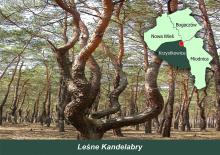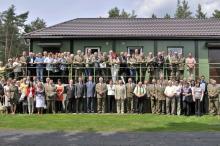Nature reserves
Nature reserves are separated areas with special natural values, preserved in their natural state or slightly changed. Forest management is limited in these areas. In Poland nowadays, there are 1441 nature reserves, 671 of which occupy the total area of over 61 thousand hectares. Nature reserves make 1.6 % of the area of forests managed by the State Forests.
Areas of protected landscapes
Protected landscape areas comprise areas with a superb landscape and diversified ecosystems, valuable for the opportunities they bring in terms of tourism and leisure activities or due to ecological corridors they provide.
Natura 2000 areas
The objective of the activities performed by the European network of nature protection areas Natura 2000 is to prevent endangered fauna and flora species from extinction and protection of biodervisity throughout Europe.
Natural monuments
A natural monument is a form of inanimate or animated nature, valuable for scientific, historical and esthetic reasons protected by law. Natural monuments are a part of our national heritage, the same as historical buildings and pieces of art are. They are equally non-renewable and precious so they deserve respect and utmost care. The most frequent in forests natural monuments are the oldest and the biggest trees. In 2012 in Poland we had 11 thousand such monuments, 8,5 thousand of which were trees.
Ecological sites
Ecological sites are usually small areas comprising small ponds, groups of trees or bushes in the middle of fields, peat bogs, swamps and dunes. They are remnants of ecosystems and are important for preservation of biodiversity. Presently in Poland there 9 thousand ecological sites occupying the area of 30 thousand hectares.
Species protection
Protection of species covers the most valuable, unique and rare representatives of flora and fauna. Strict protection in Poland comprises 584 species of plants, 90 mushroom species and 732 animal species. 65% of wild flora and fauna species in Poland are forest species.













